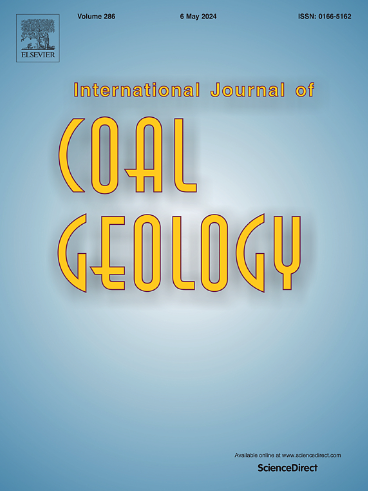Fluvial architectural style and stacking patterns in a high-accommodation coal-bearing succession: the upper Permian Newcastle Coal Measures, eastern Australia
IF 5.7
2区 工程技术
Q2 ENERGY & FUELS
引用次数: 0
Abstract
The upper Permian Newcastle Coal Measures (NCM) host world-class coal resources in coastal New South Wales, Australia. They formed close to the foredeep axis of a developing retroarc foreland basin associated with the Hunter-Bowen contractional event. In addition to the typical coal-bearing lithological suite of mudrocks, heteroliths, sandstones, and coals (with several beds of volcanic ash), the NCM preserve numerous, linear bodies of conglomerate up to 100 m thick and 20 km wide that are anomalous in the context of paralic coal-bearing successions worldwide. Four facies associations are recognized: A) linear bodies of conglomerate, gravelly sandstone and sandstone, interpreted as the deposits of major coastal plain channels, B) interbedded mudrocks and sandstones, interpreted as the product of coastal plain floodplains and floodbasins, C) coals and coaly mudrocks, interpreted as the product of coastal plain mires, and D) massive and bedded tuffs, interpreted as the product of pyroclastic falls and flows from nearby stratovolcanoes. Despite having formed on a coastal plain during a time of known sea-level changes, no depositional sequences can be recognized in the NCM, due to high rates of accommodation and sediment supply. The repeated co-occurrence of southward-trending major channel belts across the Newcastle coalfield is attributed to the area being located in the axial foredeep of the basin. A new palaeogeographic reconstruction is proposed in which the northern Sydney Basin, in the late Permian, extended further northwards across what is now the southern New England Orogen, and the north-south-elongate basin was drained by continental scale, basin-axial river systems that carried significant volumes of gravel.
澳大利亚东部上二叠统纽卡斯尔煤系高适应性含煤演替中的河流建筑风格和叠置模式
上二叠纪纽卡斯尔煤系(NCM)在澳大利亚新南威尔士州沿海拥有世界级的煤炭资源。它们形成于与Hunter-Bowen收缩事件相关的弧后前陆盆地发育的前深轴附近。除了典型的含煤岩性套泥岩、异质岩、砂岩和煤(含几层火山灰)外,NCM还保存了许多线性砾岩体,厚度达100 m,宽度达20 km,这在世界范围内的近海相含煤序列中是异常的。确定了四种相组合:A)砾岩、含砾砂岩和砂岩的线状体,被解释为主要海岸平原河道的沉积物;B)互层泥岩和砂岩,被解释为海岸平原洪泛平原和洪泛盆地的产物;C)煤和煤质泥岩,被解释为海岸平原矿泥的产物;D)块状和层状凝灰岩,被解释为附近层状火山的火山碎屑落下和流动的产物。尽管在已知的海平面变化时期在沿海平原上形成,但由于高迁入率和沉积物供应,在NCM中无法识别沉积序列。纽卡斯尔煤田上南向主水道带的反复共生,是由于该地区位于盆地的轴向前深。提出了一种新的古地理重建,在二叠纪晚期,悉尼盆地北部进一步向北延伸,穿过现在的新英格兰造山带南部,南北延伸的盆地被大陆尺度的盆地轴向河流系统排干,这些河流系统携带了大量的砾石。
本文章由计算机程序翻译,如有差异,请以英文原文为准。
求助全文
约1分钟内获得全文
求助全文
来源期刊

International Journal of Coal Geology
工程技术-地球科学综合
CiteScore
11.00
自引率
14.30%
发文量
145
审稿时长
38 days
期刊介绍:
The International Journal of Coal Geology deals with fundamental and applied aspects of the geology and petrology of coal, oil/gas source rocks and shale gas resources. The journal aims to advance the exploration, exploitation and utilization of these resources, and to stimulate environmental awareness as well as advancement of engineering for effective resource management.
 求助内容:
求助内容: 应助结果提醒方式:
应助结果提醒方式:


